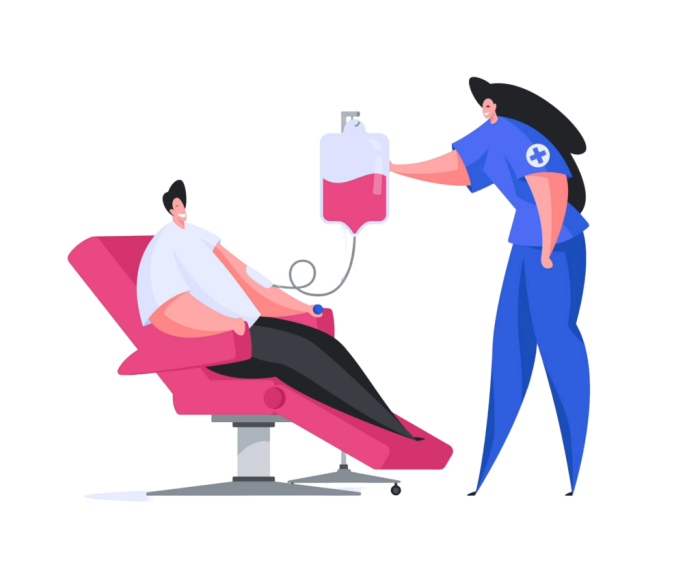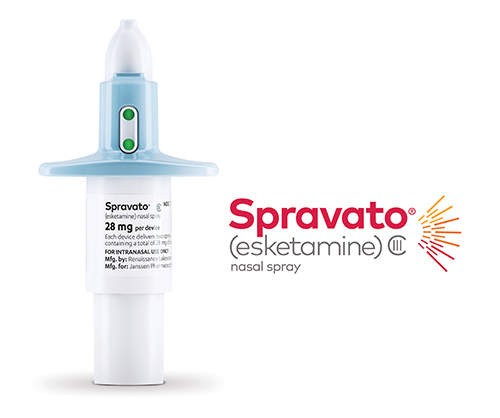Why Won’t The FDA Approve IV Ketamine Infusions?
By Michael Alvear, Health Author & Independent Researcher
My research is published on these scholarly platforms:
Last Updated:
The FDA has only approved ketamine in the form of a patented—and incredibly expensive—nasal spray, despite research showing that injections and IV ketamine are faster, more affordable, and 3 to 5 times more effective.
Why?
Why Approve the Straw, but Ignore the Water?
Imagine being told that water cures dehydration, but the FDA only approves drinking it through a straw. The straw doesn’t hydrate you—the water does. But for some reason, the FDA has decided that the only way you can receive this life-saving treatment is through one specific “straw”—the esketamine nasal spray Spravato.
The Price of Approval: Who Pays?
FDA approval for IV infusions and injections is critical. Without it, people like you and me—those without yachts or second homes to fund treatment out of pocket—are left with only one option insurance will cover–Spravato. And P.S. it covers about half of it, leaving you to pay for up to $600 per treatment.
A System Built to Favor Profit, Not Patients
Why would the FDA limit approval to a single form of ketamine therapy when other options could save lives and ease suffering? The answer lies in its structure—a system that forces for-profit companies to spend hundreds of millions to secure approval, while completely lacking a pathway to analyze and approve existing research, like the extensive evidence supporting ketamine infusion therapy and injections for depression.
Ketamine therapy can be administered in several ways, each with its own advantages. IV drips allow for precise, weight-based dosing, ensuring that each patient receives the optimal amount of medication for their body size. This customized approach can lead to better outcomes and fewer side effects compared to the one-size-fits-all dosing of Spravato.
Intramuscular injections offer another option, providing a more affordable alternative to IV drips while still allowing for personalized dosing. Then there’s the nasal spray, Spravato—an option for those who prefer to avoid needles. But it comes with fixed dosing limits: 56 mg or 84 mg. Need something in between? Too bad. Need more? You’re out of luck.
Ketamine Is the Star—Not the Delivery System
Regardless of the administration method, the real star of the show is ketamine itself. It’s the drug that’s providing relief, not the delivery method. And yet, the FDA’s approval process has focused solely on the “straw” while largely ignoring the life-saving potential of the “water” itself.
The Rigged Race to Approval
Before a pharmaceutical company can bring a new drug to market, they have to put it through a series of clinical trials. These trials are designed to test whether the drug is safe for people to use and whether it actually works better than a placebo (a fake treatment).
The process starts with preclinical studies, which involve testing the drug in lab animals. If the drug seems safe and effective in these studies, the company can move on to human trials.
Human trials are divided into three main phases:
Phase 1 trials: These are small studies, usually involving 20-80 healthy volunteers. The main goal is to assess the drug’s safety and determine appropriate dosing.
Phase 2 trials: If the drug passes Phase 1, it moves on to Phase 2. These studies are larger, typically involving a few hundred people with the condition the drug is meant to treat. The purpose is to further evaluate safety and start to assess effectiveness.
Phase 3 trials: These are the largest and most expensive trials, often involving thousands of patients across multiple locations. They aim to confirm the drug’s safety and efficacy in a broader population.
Throughout these trials, some participants receive the actual drug, while others get a placebo. This helps researchers determine whether any improvements are due to the drug itself or just a psychological effect.
Running these trials is a massive undertaking. It can take years and cost hundreds of millions of dollars. Companies have to recruit participants, monitor them closely, and analyze a ton of data.
If the trials are successful and the drug appears safe and effective, the company can submit a New Drug Application (NDA) to the FDA. The FDA then reviews all the data from the trials before deciding whether to approve the drug.
A System Stuck in the Patent Trap
It’s a rigorous process, and for good reason – we want to make sure the medicines we take are safe and actually work. But it’s also a process that favors new, patentable drugs over generics.
HOWEVER.
Hundreds of studies have demonstrated the effectiveness of injection and IV ketamine infusion therapy for treatment-resistant depression. My list of the 10 most recent peer-reviewed studies, meta-analyses, and systematic reviews on ketamine therapy for depression is just a small slice of the hundreds of studies conducted over the past few decades. So why hasn’t the FDA analyzed this data and approved IV and injection ketamine?
The answer lies in the structure of the FDA’s approval system. Ketamine is a cheap, generic drug without patent protection, which makes it nearly impossible for pharmaceutical companies to profit. To monetize it, companies must invest upwards of $100 million in strategies like novel formulations, dosing methods, combination therapies, or targeted delivery systems—barriers that make approval for existing treatments like IV ketamine nearly unattainable. But is that a valid reason for the FDA to overlook the overwhelming evidence supporting the effectiveness of IV ketamine?
A System Designed for Profits, Not Patients
The FDA’s approval system isn’t built to evaluate decades of independent studies. Instead, it requires companies to spend hundreds of millions on new formulations, favoring patent-driven profits over affordable care. Even life-saving treatments like IV ketamine infusion can remain sidelined, trapped behind a system blind to what lies in plain sight–a mountain of convincing evidence that IV and injection ketamine is effective at treating depression.
IV Ketamine: Trapped Behind a Locked Gate
In essence, the FDA functions like a locked gate with a rusted keyhole, barring entry to innovations like IV ketamine unless they’re packaged in the lucrative forms its system was built to favor.
The FDA has no pathway to approve treatments based on decades of independent studies and meta-analyses. Its system values costly, industry-funded trials over evidence, no matter how overwhelming. This rigid framework leaves treatments like IV ketamine trapped in limbo, sidelined despite a mountain of research proving its efficacy. Instead of prioritizing patient needs, the FDA’s process favors profit-driven control, delaying access to life-saving care.
What the FDA Could Do Differently
But it doesn’t have to be this way. The FDA could establish a separate approval track for treatments with substantial independent evidence. This track would rely on the cumulative weight of peer-reviewed studies, systematic reviews, and meta-analyses—research already vetted by the scientific community. Instead of demanding pharmaceutical sponsorship, the FDA could evaluate safety, efficacy, and real-world outcomes directly from this robust body of evidence.
For ketamine infusion therapy, such a system would mean acknowledging what’s already clear: it works, it’s safe when properly administered, and it saves lives. By putting patient needs first, this track could bypass the current profit-driven model and accelerate access to life-changing treatments, ensuring that evidence—not industry interests—drives the approval process.
How The Esketamine Nasal Spray Spravato Got FDA Approval
As I said earlier, the only way a generic drug can gain FDA approval is for a company to spend up to hundreds of millions to develop novel formulations, dosing methods, combination therapies, or targeted delivery systems. That’s exactly what Janssen Pharmaceuticals (now J&J) did. Here’s how they pulled it off:
Novel Formulation
Spravato contains esketamine, which is a derivative of ketamine. This is different from traditional ketamine in a few ways:
-
- It only contains the S-enantiomer of ketamine (esketamine), while regular ketamine is a mixture of both S and R forms.
- It’s administered as a nasal spray, not an IV or injection.
Targeted Use
The FDA approved the esketamine nasal spray specifically for:
-
- Treatment-resistant depression in adults
- Depressive symptoms in adults with major depressive disorder with acute suicidal ideation or behavior.
Combination Therapy
Spravato is approved for use only in conjunction with an oral antidepressant, not as a standalone treatment. This combination approach is supposed to be part of what makes it unique.
Controlled Administration
Spravato can only be given in certified healthcare settings. Patients self-administer the nasal spray under supervision and must be monitored for at least two hours afterward.
Safety Measures
The FDA implemented a Risk Evaluation and Mitigation Strategy (REMS) for Spravato due to potential risks of sedation, dissociation, and misuse. This restricts its distribution and ensures it’s used safely.
In summary, Spravato’s FDA approval was based on its novel nasal spray formulation, targeted use for specific types of depression, combination therapy approach, and strict safety protocols. These factors set it apart from traditional IV or injection ketamine use for depression.
Or do they?
See, both compounds–Spravato’s esketamine and ‘regular’ ketamine– effectively treat depression through the same core mechanisms. The “novelty” of esketamine’s formulation mattered more for regulatory approval and commercial strategy than for any real difference in how it works.
Spravato: A Single Glove Sold as a Revolution
To understand what I mean, picture ketamine like a pair of gloves – it contains both a left and right glove (the R and S-enantiomers that make up the compound) that work together. What J&J did with Spravato was essentially remove the right glove from the pair and say “Look, we’ve invented a new type of glove!”
Then they go on to say, “it’s just the right-handed glove [novel formulation], but instead of putting it on your hand directly, you have to spray it on through a special device [novel administration method]. You can only use it if you have specific types of cold hands that other gloves haven’t helped with [targeted delivery–for treatment-resistant depression and major depressive disorder with acute suicidal ideation only].
You can only do this at specific certified glove-spraying centers [part of novel approach], you must also wear a specific type of sock [the stipulation that you must be on an antidepressant to get Spravato], and you have to stay at the center for 2 hours after spraying to make sure the glove is working properly [novel safety measures].”
Innovation or Marketing Spin?
So, yes, technically, Spravato ticks off all of the FDA’s boxes–novel formulation, dosing methods, combination therapies, targeted delivery systems and safety systems, but at the end of the day, what are you really getting? You’re still just getting a glove that keeps your hand warm, which is exactly what the original pair of gloves did. The right glove doesn’t actually warm your hand any better than having both gloves did – it just comes with more rules and restrictions about how you can use it.
In terms of actually treating depression, it’s not doing anything fundamentally different from regular ketamine – it’s just wearing a fancier outfit with more complicated instructions.
Let me be clear—this isn’t about Johnson & Johnson doing anything wrong, because they didn’t. And I’m not claiming Spravato isn’t effective—trust me, I took it, and it put me in remission in just six weeks. My issue isn’t with J&J; it’s with the FDA and the system that forces companies into these kinds of profit-driven pathways at the expense of broader patient access.
The FDA’s Skewed Priorities
For decades, scientists have been studying a pair of gloves that keeps hands remarkably warm. They’ve published hundreds of papers documenting how well these gloves work together – the left glove and the right glove acting in perfect harmony to provide warmth. But because these gloves were old and anyone could make them, no company saw profit in promoting them.
Then along comes a large company that says, “What if we take just the right glove, put it in a spray bottle, and call it a revolutionary new hand-warming technology?” They spend hundreds of millions of dollars not on proving it works better than the original pair (it doesn’t), but on:
- Figuring out how to separate the right glove from the left
- Developing a special spray bottle to apply it
- Creating a list of very specific types of cold hands it can be used for
- Requiring people to wear a specific sock with it
- Setting up special glove-spraying centers
And the FDA says “Yes! This is exactly what we want – a new way to package and sell a glove, even though we have mountains of research showing the original pair of gloves works just as well or better.”
The original pair of gloves – backed by years of peer-reviewed research showing its effectiveness – remains harder to access. Not because it doesn’t work, but because no company has gone through the expensive process of repackaging and rebranding it with special rules and restrictions.
The FDA’s system seems to value marketing innovation over proven effectiveness, preferring a rebranded right glove with complicated instructions over a simple pair of gloves that we already know works wonderfully well.
The Gloves Are Off
The FDA’s approval process isn’t broken—it’s working exactly as designed. The problem is, that design prioritizes profit-driven innovation over patient-centered care. It rewards companies for rebranding existing solutions, like taking one glove from a pair and calling it revolutionary, while ignoring decades of research that prove the original pair works just as well, if not better.
Spravato, with its sleek packaging and intricate set of rules, ticks all the FDA’s boxes for approval. But what about the countless patients who don’t need the bells and whistles, just a treatment that works? The FDA has no pathway to approve life-saving therapies like IV and injection ketamine based solely on decades of independent, peer-reviewed research. Instead, the system demands hundreds of millions of dollars in investments to meet regulatory standards, creating barriers that favor patents over patients.
It doesn’t have to be this way. The FDA could establish a separate track for treatments with overwhelming evidence—evaluating safety and efficacy directly from independent studies rather than requiring a corporate sponsor to rewrite the rulebook. For the best ketamine therapy–IV– this would mean unlocking access to a proven treatment that’s affordable, effective, and already saving lives.
The question isn’t whether the science supports ketamine infusion—it does. The question is whether the FDA is willing to change a system that prioritizes profits over people. Until that happens, we’re left with a process that celebrates the right-handed glove in a shiny box while leaving the full pair, and the patients who need it, out in the cold.




